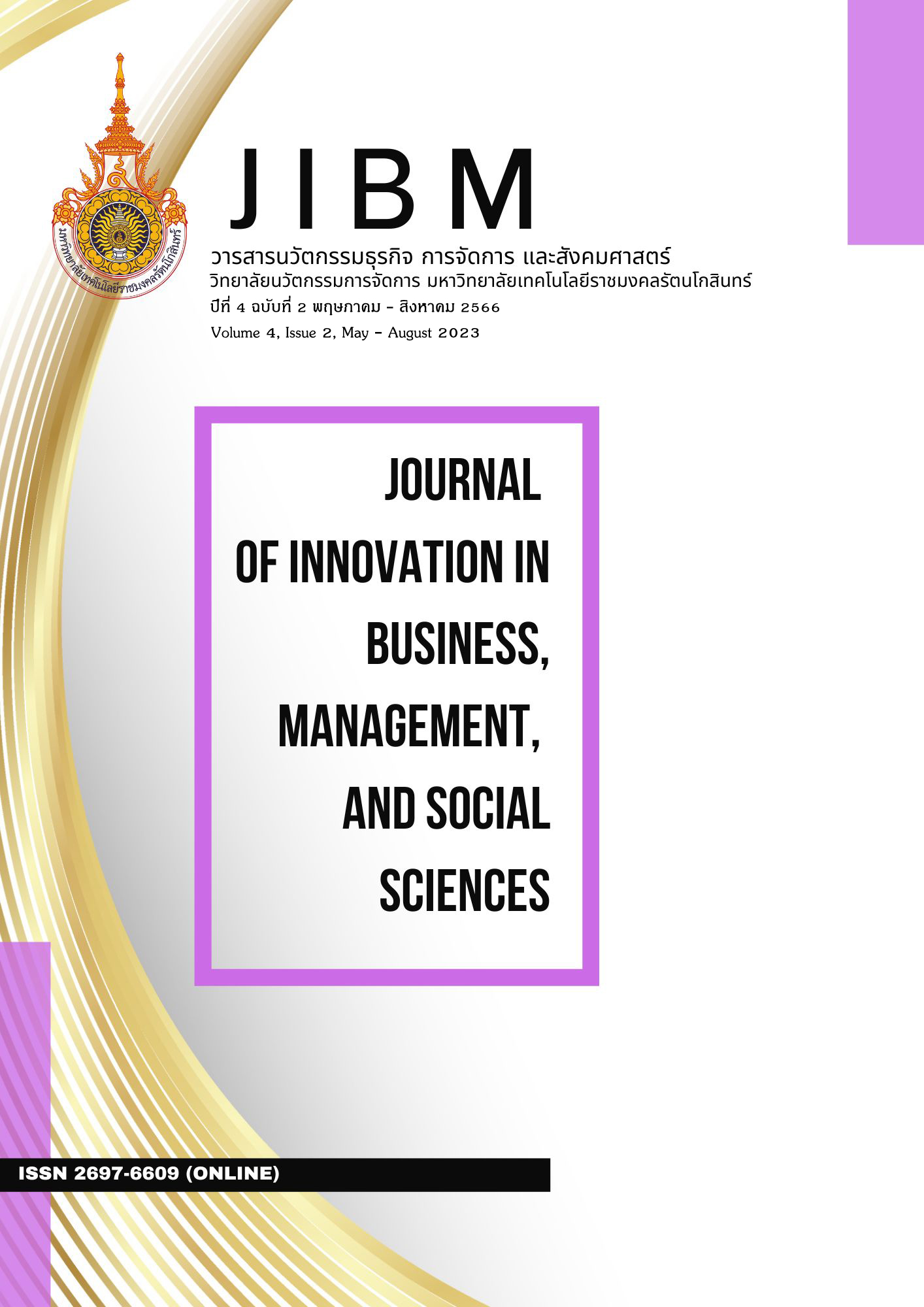ปัจจัยที่ส่งผลต่อการจัดอันดับความน่าเชื่อถือของบริษัทที่จัดอยู่ในดัชนี MSCI โดยสถาบันจัดอันดับ 3 สถาบัน ได้แก่ Standard and Poor’s Moody’s และ Fitch Ratings
คำสำคัญ:
อันดับความน่าเชื่อถือ, อัตราส่วนทางการเงิน, Ordered Probit, Bivariate Ordered Probitบทคัดย่อ
งานนี้ทำการศึกษาถึงความสัมพันธ์ระหว่างปัจจัยที่มีผลต่อการจัดอันดับความน่าเชื่อถือ (Credit Rating) ของบริษัทในดัชนีหลักทรัพย์ที่จัดทำโดย Morgan Stanley Capital International (MSCI) ที่ถูกจัดอันดับความน่าเชื่อถือโดยสถาบันการจัดอันดับความน่าเชื่อถือจาก 3 สถาบัน ได้แก่ S&P Global Ratings, Moody's Investors Service และ Fitch Ratings ช่วงปี 2547 - 2563 โดยใช้วิธีการวิเคราะห์ข้อมูลผ่านแบบจำลอง Ordered Probit และแบบจำลอง Bivariate Ordered Probit
ผลการศึกษาพบว่า ปัจจัยอัตราส่วนทางการเงินที่ส่งผลบวกกับอันดับความน่าเชื่อถือ ได้แก่ อัตราส่วนผลตอบแทนจากสินทรัพย์ (ROA) และอัตราส่วนความสามารถในการจ่ายดอกเบี้ย (ICR) ส่วนปัจจัยที่ไม่ใช่อัตราส่วนทางการเงินและส่งผลบวกกับอันดับความน่าเชื่อถือ ได้แก่ ขนาดสินทรัพย์ของกิจการ (SIZE) และอันดับความน่าเชื่อถือระดับประเทศ (CTR) นอกจากนี้ ยังพบว่าการประมาณค่าด้วยวิธี Bivariate Ordered Probit Model มีผลการศึกษาเช่นเดียวกับการประมาณค่าโดยวิธี Ordered Probit Model และมีปัจจัยที่มีผลต่อการจัดอันดับความน่าเชื่อถือเพิ่มเติม คือ การจัดอันดับด้านสิ่งแวดล้อม สังคม และธรรมาภิบาล (ESG Score) แต่ส่งผลลบกับอันดับความน่าเชื่อถือ
แบบจำลอง (Model) ที่ใช้ศึกษาการพยากรณ์อันดับความน่าเชื่อถือของทั้ง 3 สถาบัน ได้แก่ 1) Standard and Poor’s มีความถูกต้องสูงถึงร้อยละ 74.87 แบบจำลองต่อมา 2) Moody’s มีความถูกต้องสูงถึงร้อยละ 87.57 และ 3) Fitch Ratings มีความถูกต้องสูงถึงร้อยละ 87.11
เอกสารอ้างอิง
Devalle A., Fiandrino S. & Cantino V. (2017). "The Linkage Between Esg Performance And Credit Ratings: A Firm-Level Perspective Analysis." Journal of Business And Management 12(9): 53-65.
Hung, K., Cheng, H. W. , Chen, S. S. & Huang, Y. C. (2013). "Factors That Affect Credit Rating: An Application Of Ordered Probit Models." Journal of Economic Forecasting 16(4): 94-108.
Niemann, M., Schmidt, J. H. & Neukirchen, M. (2007). "Improving Performance Of Corporate Rating Prediction Models By Reducing Financial Ratio Heterogeneity." Journal of Banking & Finance 32(2008): 434-446.
Metz, A. (2006). Moody's Credit Rating Prediction Model, Moody's
Pinches, G. E. & Mingo, K. A. (1973). "A Multivariate Analysis Of Industrial Bond Ratings." Journal of Finance 28(1): 18.
Morningstar (2019). "Morningstar Sustainability Rating Methodology." 1.2: 7.
S&P Global Ratings (2020). "Essential Intelligence: General Purpose; Esg In Credit Ratings." From https://www.spglobal.com/ratings/en/products-benefits/products/esg-in-credit-ratings.
Mendiratta, R., Varsani, H. D. & Giese, G.(2020). "Foundations Of Esg Investing In Corporate Bonds How Esg Affected Corporate Credit Risk And Performance." 2: 18-21.
อเนก อรุณศรีแสงไชย,ภูริณัฐ อังศุวัฒกกุล, วรรณภา ยินดีธรรม และ ปิยภัสร ธาระวานิช (2011). "ความสัมพันธ์ระหว่างอัตราส่วนทางการเงินกับอันดับเครดิตของบริษัทจดทะเบียน." วารสารเศรษฐศาสตร์ธรรมศาสตร์ 29(2): 117-158.



